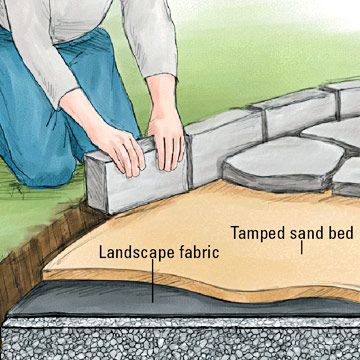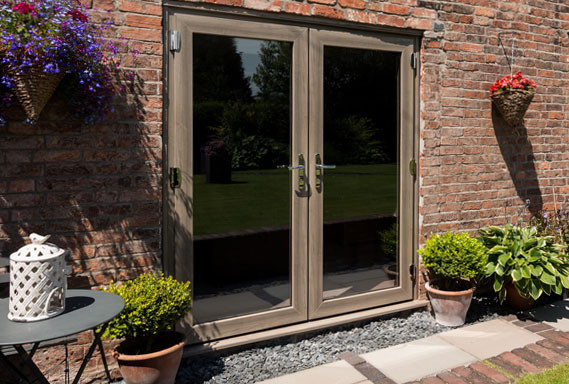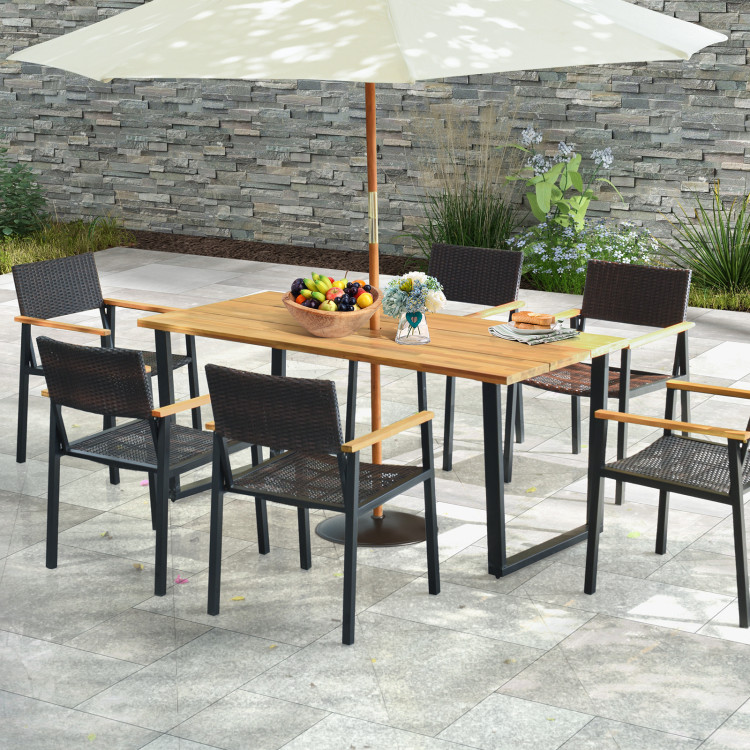How to Design and Build a Stunning Square Stone Patio Ideas
A square stone patio is a great way to enhance curb appeal, create a comfortable outdoor living space, and increase the value of your home. Whether you want a rustic, modern, or elegant look, you can find the perfect stone for your patio. Plus, building a square stone patio is not as hard as you might think. With some planning, preparation, and patience, you can transform your backyard into a beautiful oasis.

In this article, we will show you the best Square stone patio ideas to design and build a stunning square stone patio in four easy steps: planning, preparing, laying, and finishing. We will also provide you with some examples of different styles and materials of square stone patios, such as flagstone, slate, limestone, or coral stone. By the end of this article, you will have all the information and inspiration you need to start your own project and enjoy your new outdoor space.
Planning Your Square Stone Patio Ideas
Before you start building your square stone patio, you need to do some planning. Planning will help you avoid mistakes, save time and money, and achieve the best results. Here are some factors to consider when planning your square stone patio:

- Size and shape: The size and shape of your patio will depend on the available space, the purpose of your patio, and your personal preference. You can use a tape measure and a string line to mark the area of your patio. Make sure you leave some extra space for the edging and the drainage. You can also use stakes and spray paint to outline the shape of your patio. A square stone patio can have a simple or complex shape, such as a square, a rectangle, an L-shape, or a U-shape.
- Location and orientation: The location and orientation of your patio will affect the amount of sun, shade, wind, and privacy you will get. You should choose a location that suits your needs and preferences. For example, if you want to enjoy the morning sun, you can place your patio on the east side of your house. If you want to have more shade, you can place your patio near a tree or a pergola. You should also consider the view, the slope, and the drainage of your location. You should avoid placing your patio near utility lines, septic tanks, or underground pipes.
- Drainage: Drainage is an important aspect of planning your square stone patio. You want to prevent water from pooling on your patio or damaging your foundation. You should make sure your patio has a slight slope away from your house and towards a drain or a gutter. You can use a level to check the slope of your patio. You should also install a base layer of gravel and sand under your stone pavers to allow water to seep through the gaps. You can also use permeable pavers or polymeric sand to improve the drainage of your patio.
- Budget: Your budget will determine the type and amount of stone you can use for your patio. You should calculate the cost of your materials, tools, labor, and permits before you start your project. You can use online calculators or consult a professional to estimate the cost of your patio. You should also compare the prices and quality of different stone suppliers and contractors. You can save money by doing some of the work yourself, choosing local and recycled stone, and buying in bulk.
Preparing
After you have planned your square stone patio, you need to prepare the site for the installation. Preparing the site will ensure a smooth and stable surface for your stone pavers. Here are some steps to follow when preparing the site for your square stone patio:
Clearing:
The first step is to clear the area of any grass, weeds, rocks, or debris. You can use a shovel, a hoe, or a sod cutter to remove the vegetation. You should also remove any roots or stumps that might interfere with the leveling or drainage of your patio. You should dispose of the waste properly or use it for composting or landscaping.


Digging:
The next step is to dig the trench for the base and the edging of your patio. You can use a shovel, a pickaxe, or a trench to dig the trench. You should dig the trench about 6 to 8 inches deep, depending on the thickness of your stone pavers and the base layer. You should also dig the trench about 6 inches wider than the marked area of your patio to allow for the edging. You should make sure the trench is level and even. You can use a level, a string line, and a measuring tape to check the depth and the slope of the trench.
Laying:
The third step is to lay the base and the edging of your patio. You can use a wheelbarrow, a rake, and a shovel to spread the gravel and sand over the trench. You should use about 4 to 6 inches of gravel and 1 to 2 inches of sand for the base layer.
You should also use a tamper, a compactor, or a plate vibrator to compact the base layer. You should make sure the base layer is firm and flat. You can use a level and a string line to check the level and the slope of the base layer.

You should also lay the border stones along the edge of the trench. You should use stones that are slightly higher than the pavers and match the style and color of your patio. You should also use a rubber mallet and a level to set the border stones in place.
Laying
The final step is to lay the square stone pavers on the base and the edging of your patio. Laying the pavers will give your patio the look and feel you want. Here are some tips to follow when laying the pavers for your square stone patio:
- Arranging: You should arrange the pavers in the pattern and design you want. You can use a simple or complex pattern, such as a running bond, a herringbone, a basket weave, or a random one. You should also mix and match the colors and sizes of the pavers to create a natural and varied look. You should start from a corner or a straight edge and work your way outwards. You should also leave about 1/4 inch of space between the pavers for the joints.
- Cutting: You should cut the pavers to fit the shape and size of your patio. You can use a wet saw, a circular saw, or a chisel to cut the pavers. You should measure and mark the pavers before cutting them. You should also wear gloves, goggles, and a mask to protect yourself from the dust and debris. You should also smooth the edges of the cut pavers with a file or a grinder.
- Fitting: You should fit the pavers snugly on the base and the edging of your patio. You can use a rubber mallet and a level to tap the pavers into place. You should also use a string line and a spacer to keep the pavers aligned and spaced. You should check the level and the slope of the pavers as you go. You should also adjust the pavers as needed to avoid gaps or overlaps.
Finishing
The last step is to finish your square stone patio by filling the joints, sweeping the surface, and sealing the stone. Finishing your patio will make it look more polished and professional, as well as protect it from weeds, insects, and weather damage. Here are some tips to follow when finishing your patio:


- Filling: You should fill the joints between the pavers with sand or polymeric sand. Sand is a natural and inexpensive material that allows water to drain through the joints. Polymeric sand is a synthetic material that hardens when wet and prevents weeds and ants from invading the joints. You can use a broom and a hose to spread and settle the sand or polymeric sand over the joints. You should make sure the joints are completely filled and level with the pavers.
- Sweeping: You should sweep the surface of your patio with a broom or a blower to remove any excess sand, dust, or debris. You should also rinse the surface with a hose or a pressure washer to clean any stains or dirt. You should let the surface dry completely before sealing the stone.
- Sealing: You should seal the stone pavers with a sealer that is suitable for the type and color of your stone. A sealer will enhance the appearance and durability of your stone, as well as make it easier to clean and maintain. You should apply the sealer according to the manufacturer’s instructions, using a sprayer, a roller, or a brush. You should also wear gloves, goggles, and a mask to protect yourself from the fumes and the chemicals. You should let the sealer dry and cure for the recommended time before using your patio.
Final Analysis
Congratulations! In this detailed guide about Square stone patio ideas, You have successfully designed and built a stunning square stone patio. You can now enjoy your new outdoor space with your family and friends. Here are some final advice to help you enhance and maintain your patio:
- Enhance: You can enhance your patio by adding furniture, lighting, plants, and accessories that match your style and personality. You can also create different zones for dining, lounging, and entertaining. You can also add a fire pit, a fountain, or a pergola to create more ambiance and comfort.
- Maintain: You can maintain your patio by cleaning and repairing it regularly. You should sweep and rinse your patio at least once a month to remove any dirt or debris. You should also remove any weeds or ants that might grow in the joints. You should also inspect your patio for any cracks, chips, or loose stones and fix them as soon as possible. You should also reseal your patio every few years to keep it looking fresh and new.
We hope you enjoyed this article and found it useful. If you have any questions or feedback, please let us know in the comments section below. Thank you for reading, and happy patio building!
Disclosure: Our blog contains affiliate links to products. We may receive a commission for purchases made through these links. However, this does not impact our reviews and comparisons. We try our best to keep things fair and balanced, in order to help you make the best choice for you.









